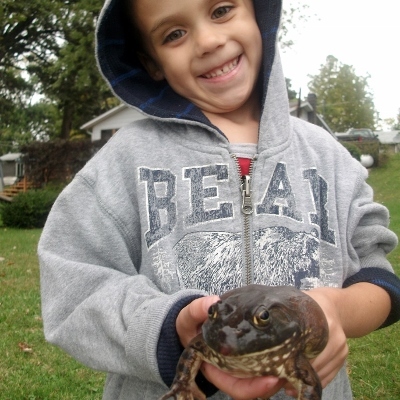 Preschool children have rejoiced the past few weeks. This is because spring chased winter away, and young children can finally go outside to play. It’s a magical time full of nature’s newness: budding trees, baby birds, and springtime blossoms. It’s also a time when new safety concerns arise. For example, a child’s delicate skin can be at risk this time of year. Let’s explore a few of these dangers.
Preschool children have rejoiced the past few weeks. This is because spring chased winter away, and young children can finally go outside to play. It’s a magical time full of nature’s newness: budding trees, baby birds, and springtime blossoms. It’s also a time when new safety concerns arise. For example, a child’s delicate skin can be at risk this time of year. Let’s explore a few of these dangers.
Chigger Bites – An Itchy, Red Mess
Also known as red bugs, chiggers are tiny mites that feed on humans. Contrary to what many people believe, they do not actually burrow into the skin. Instead, they feed by injecting their saliva into the host’s skin after they have attached themselves. This action actually dissolves the cells, which the mite ingests.
The main problem with chiggers is that they can cause intense itching and angry red welts that can last for days.
Chigger bites can be prevented. As soon as a preschooler comes in from playing outside in a chigger infested area, have him or her quickly rinse off in the shower. Be especially careful to wash areas where the skin is thin and where clothing has been restricting, such as the waist band.
For more information from the U.S. Army on chiggers, follow this link.
Rosy Red Cheeks Can Hurt
Delicate skin can quickly turn red in the springtime sun, and these burns hurt. Research also shows that the more burns a person experiences in their youth, the greater the chance of skin cancer later in life.
Protect a preschooler from sunburns by applying generous amounts of sunscreen to exposed skin before they go outside to play. Hats also work to block the sun’s rays.
Scratches and Scrapes – Ouch!
Every child will experience minor scratches and scrapes to the skin; it’s part of growing up. But, these skin abrasions can easily be minimized.
For instance, if your child will be playing in the woods, and it’s not too hot, encourage him or her to wear long sleeves and long pants. Exploring the great outdoors is much more fun when legs aren’t getting scratched by black raspberry bushes!
Ticks:Â More Than Just Tagalongs
A menacing presence lurks in the woods and in tall grass. It’s tiny, but it’s hungry … and pretty darn smart. The tick can attach itself to a child without being felt. It’s only when it has grown big — full of blood — that its presence becomes obvious.
In most cases, ticks cause no permanent damage. In some parts of the United States, however, ticks spread an illness called Lyme Disease. This illness can go undetected for a long time, but once it takes hold, it can cause devastating effects on the body.
To prevent a child from contracting Lyme Disease, take the following precautions. First, dress a child in long sleeves and long pants if the weather permits. Next, perform daily “tick checks.” Inspect your child from head to toe for these sneaky pests.
For more information on ticks from the Centers for Disease Control and Prevention, click here.










